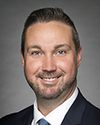I think one reason why it's of interest to folks around this table is that when we think of the federal government and of big IT projects, we tend to think of the Phoenix pay system, the ArriveCAN app and other things that really haven't worked very well.
Seeing that there's already success and there are models out there already that are working is an inspiration. It's one reason why some of us might be more interested in seeing organizations like yours get the resources they need to scale up instead of asking a new federal agency to start from scratch on a new system, with all the financial hazards, among other things, that this represents.
My question is along a similar line.
How do you imagine the relationship between your organization, data collection, and presenting organizations like yours across the country with the new water agency? What kind of relationship do you think would be the best kind, from the point of view of getting that kind of product where people can access that information at their fingertips in a more comprehensive way and also in terms of governance?
What is important to your organization to maintain in terms of its own self-governance, versus a more integrated approach with whatever the new authority might be?
Could you just give us a sense of what you think is important for policy-makers to bear in mind in that process?




